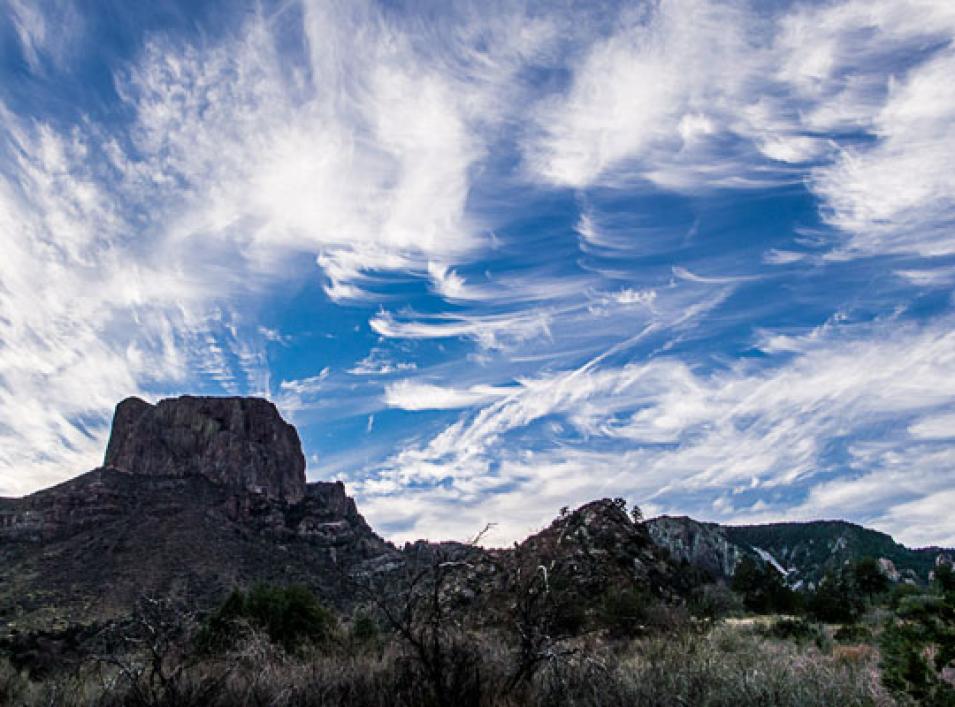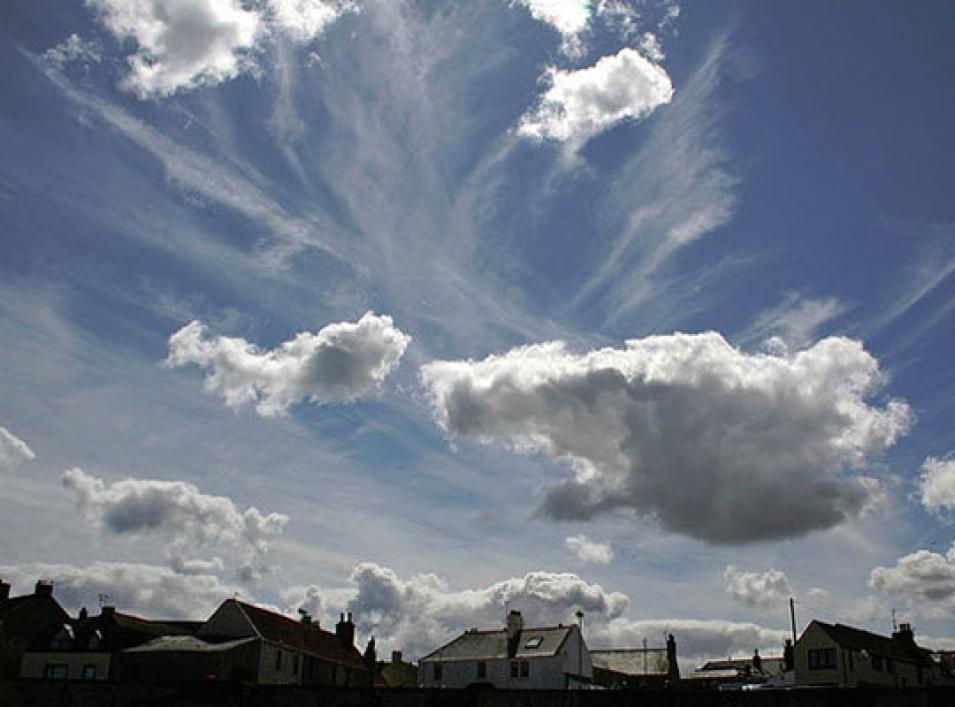For centuries, many a sailor has learned to heed the message of high, windswept clouds to batten down their hatches. As the proverb goes, “Mares’ tails and mackerel scales make lofty ships to carry low sails.” Together, wispy cirrus clouds resembling horse tails and patchy cirrocumulus signal that a rain storm is on its way.
But scientists are interested in other messages these high altitude clouds can share. Thick, low clouds like cumulus reflect incoming sunlight while thin, high clouds like cirrus trap the sun’s thermal energy in Earth’s atmosphere. For researchers Tristan L’Ecuyer and Graeme Stephens who study how much heat the planet holds or sends back to space, known as Earth’s energy budget, this is an important distinction. Which type wins overall? That is an ongoing scientific debate, but L’Ecuyer and Stephens are chipping away at the answer. What scientists do not debate is that cirrus are no ordinary clouds. Understanding them may be key to understanding how Earth is going to handle continued warming.
Cloud computing
Most cirrus stream out of the chimneys of tropical cyclones or form at the top of boiling thunderstorms, and can stretch over entire continents when pulled by the jet stream. They are made of millions of tiny ice crystals of varying shapes, like disks and rods, and are sometimes so thin they are almost transparent. These features give cirrus an uncanny ability to allow solar radiation into the atmosphere, yet prevent it from reflecting back out into space.
Like large lids over the atmosphere, cirrus effectively prevent warm air from rising. Stephens and L’Ecuyer found they do this especially well over warm surfaces. Stephens, a senior scientist at NASA's Jet Propulsion Laboratory, said, “Think about high, cold cirrus at 14 kilometers [9 miles] sitting above the tropics over a 300 degree Kelvin [80 degree Fahrenheit] ocean temperature. That’s when they’re most effective at trapping heat.”
The power to trap heat means they can also squelch storms. Storms build when warm air rises over a pocket of cold air like a conveyer belt, causing the cycle of convection. When that warm air finds its higher spot in the atmosphere, it condenses into rain or ice droplets, depending on the altitude. But cirrus clouds hamper this cycling of air, and much of the precipitation that should follow. More heat and less rain may be a welcome change for seafarers, but it means cirrus also create a powerful form of positive feedback to a warming climate.
Put a cloud below the cirrus, however, and the dynamic changes. “What happens now that you have a cloud below the cirrus?” Stephens said. “It reduces the ability of the cirrus to trap heat. So the greenhouse effect of a cirrus cloud depends on what’s below it.” This complicates the already perplexing task of mapping clouds on a global scale, which is exactly what scientists need to do to calculate the sway clouds hold over the energy budget. Yet Stephens and L’Ecuyer took it a step further to capture a profile of clouds throughout the entire atmosphere, from top to bottom. Stephens said, “We needed to know: Is it just cirrus and one cloud layer below, or cirrus and two cloud layers? And how high are they?”


